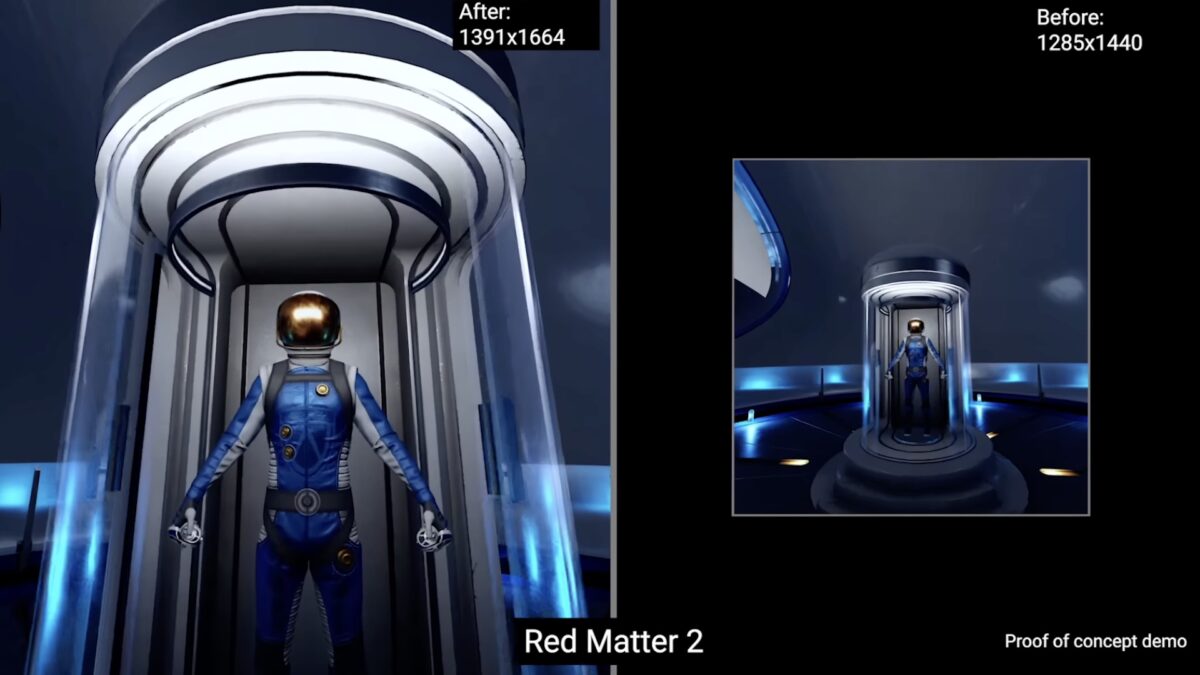What does Meta Quest 2's performance boost mean for VR games?

Meta Quest 2 will soon have a higher CPU and CPU clock rate. But when and how will VR games benefit?
Meta Quest 2 will not only be cheaper, but also significantly faster. Meta surprised the VR fan community with this news yesterday.
Let's take a look at the numbers:
- CPU: Up-to 26% performance increase on Quest 2
- GPU: Up-to 19% performance increase on Quest 2
Note that Meta already increased the GPU clock rate by 7 percent back in December. The GPU clock increased from the original 490 Mhz to about 525 Mhz and now increases again to about 625 Mhz. This makes the Quest 2's GPU faster than the Pico 4's, which has a GPU clock of 587 Mhz. Both devices use the same chip: the Snapdragon XR 2 Gen 1.
The higher CPU and GPU clock speeds will be available with the v55 firmware update, which is expected to be released in June.
Meta Quest Pro also benefits from a performance boost, with the CPU clock increasing by 26% and the GPU clock increasing by 11%.
Another newly announced feature that could have an impact on VR games is Dynamic Resolution Scaling (DSR). This feature automatically adjusts the render resolution of the VR app depending on how much the GPU is being utilized. The frame rate is not affected.
The performance boost doesn't equal a graphics boost
What does all of that mean, then? Do all VR games benefit from the performance boost and DSR? And to what extent?
Let's take a look at the performance boost first. If the new performance boost applies in the same way as the last one, then developers will automatically have more performance available from the next update without having to do anything. However, VR games will not necessarily benefit from the higher CPU and GPU clocks in all cases.
Meta engineer Neel Bedekar explained in December how the performance boost might affect VR apps:
- If the VR app is dropping frames due to GPU, the performance boost will automatically provide a better frame rate.
- On the other hand, if the frame rate is stable, the performance boost will have no effect. In this case, developers must actively take advantage of the performance boost by first updating their VR app.
Developers can use the extra performance headroom for a variety of enhancements: They can enable a higher frame rate for a smoother experience, target a higher default resolution for sharper visuals, or add more detail, effects, and objects to their game worlds.
VR games need to be updated to get the most benefit
The following video shows clips from Beat Saber, The Walking Dead: Saints & Sinners, and Red Matter 2 rendered at higher resolutions thanks to the performance boost. In the case of Beat Saber and TWD:SS, the resolution increases by a whopping 56 percent.
We don't know if the developers will actually increase the resolution that much. The test runs in the video are just a proof of concept. Nevertheless, these early results are impressive.
And what about Dynamic Resolution Scaling? In this case, developers have to update their apps and activate the feature first.
"Developers will need to update their apps to take full advantage of the increased processor speeds and dynamic resolution scaling, which, when enabled, will automatically increase the resolution when the GPU is underutilized,", a Meta engineer in the video says.
With 19 percent more GPU power now available to Quest 2, this could theoretically increase image quality in many VR games, but as mentioned, only if developers enable DSR.
According to Meta, the implementation of dynamic resolution scaling requires "minimal effort". Nevertheless, VR games that are no longer maintained and updated will not benefit from DSR and, in the worst case, not even from the recent performance boost, if they maintain a stable framerate.
Note: Links to online stores in articles can be so-called affiliate links. If you buy through this link, MIXED receives a commission from the provider. For you the price does not change.